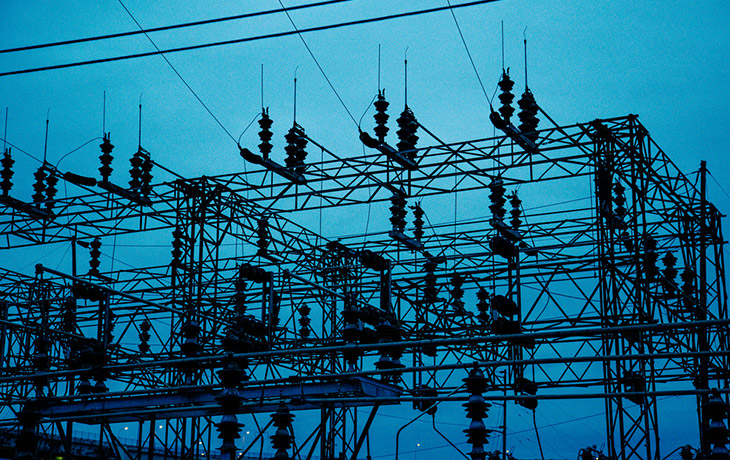Some experts dismiss the EMP threat as overrated fear mongering, while others consider it as real and dangerous as climate change. Until we know more about the risks and results, the evidence points to EMPs as a valid and reasonable concern you should protect against in your survival preparedness.
In reports and studies going back decades, the US military and an alphabet soup of government agencies have all sounded the alarm about the threat to modern life posed by EMPs from three main sources:
- nuclear explosions
- powerful solar events
- dedicated EMP bombs and sci-fi weapons
We spent over 95 hours talking to experts and reading detailed reports in order to sort scientific fact from fear-mongering fiction. The experts we interviewed include a top scientist who recently testified before the Senate on the threat of space weather to the power grid, and an engineer who has spent his career preparing classified and unclassified reports on the ways EMPs affect technology (interview transcript).
Here’s what we’ve learned:
EMPs are powerful bursts of energy that can occur naturally as a result of so-called “space weather” events (i.e. the sun blasting charged particles at the earth) or can be triggered by a man-made source like a nuclear explosion.
There are two types of EMPs we care about: high-frequency pulses that affect the small wires in computer-based systems, and low-frequency pulses that affect large-scale equipment in the power grid.
Experts have modeled a range of EMP scenarios. Some (relatively) optimistic models suggest that even a large EMP could leave most of the national grid intact, even though it would still displace tens of millions of Americans for years and cause short-term regional and national chaos. Other, more pessimistic outcomes feature an immediate collapse of most of the power grid and a cascading collapse of the rest of the nation’s critical infrastructure that results in long-term chaos.
The sun-based EMP threat is the big one that even most skeptics are forced to acknowledge. In any given year we have between a 1% and 3% chance of the sun taking down enough of our power grid to trigger a rapid, cascading collapse of all the systems (telecommunications, fuel, water, food, commerce) that make modern life possible.
Forget about EMP superweapons. That is secret, sci-fi hardware that only real militaries will have access to — if the tech even exists today to begin with. So if your city is on the receiving end of such a weapon, it’s because we’re at war with a major military power, in which case we all have bigger problems than your car shutting down from an EMP.
The nuclear-based EMP threat from terrorists is close to zero, and the threat from rogue states is quite low. The nuclear EMP threat from major military powers is the same as the threat of a nuclear exchange, since an EMP attack that could be attributed to a specific foreign enemy would only take place in the context of a full-blown conflict.
Some groups and politicians vastly inflate the nuclear EMP threat from rogue states and terrorists in order to sell books, rile up voters, argue for foreign invasions, and convince their government to buy costly tech from big defense contractors.
The energy industry has powerful incentives to downplay the threat from EMP because hardening the grid will cost them money. For decades, the industry has been actively lobbying regulators and the public to minimize the appearance of any threat so they can carry on with business as usual and remain free from additional, costly regulations.
The full range of EMP threats are worth preparing for to one degree or another. The majority of EMP preps are covered by preparing for other scenarios — mainly nuclear explosions and general grid-down events — but there are a handful of EMP-specific preps that you should know about, e.g. Faraday cages, learning how to stop a car with an emergency brake, and knowing which questions to ask and actions to take immediately after the power goes out.
Be prepared. Don’t be a victim.
Want more great content and giveaways? Sign up for The Prepared’s free newsletter and get the best prepping content straight to your inbox. 1-2 emails a month, 0% spam.
- EMP scenarios
- The science of EMP
- EMP effects on technology
- Solar EMPs are the real threat
- Nuclear EMP attacks are possible, but unlikely
- EMP bombs, superweapons, and briefcase nukes
- How a nuclear EMP impacts electronics
- EMP's impact on cars
- Experts disagree on how EMP would affect the grid
- Grid basics
- How an EMP could bring down the grid
- Cascade effects of EMP on other critical infrastructure
- What to do in the immediate aftermath of an EMP that brings down the grid
Why you should trust me
In addition to the 95 hours of research for this article, I have an undergraduate degree in Electrical Engineering and am one of the founders of the popular technology website Ars Technica. I’ve spent much of the past 20 years explaining complex technical topics to readers, and have written a book on microprocessor architecture.
EMP scenarios
In the popular imagination, the term “EMP” is shorthand for a scary grab-bag of natural and man-made electromagnetic phenomena. All of this bad stuff is jumbled together into a giant, terrifying doomsday knot, but really there are only a handful of distinct scenarios that experts warn about:
- The sun and a powerful solar event: inevitable at some point, resulting in everything from tens of millions without power for weeks to total long-term collapse.
- Countries with advanced militaries and nuclear-tipped ICBMs: low probability most of the time (depending on geopolitical conditions), with impacts that range from large regional disruptions of critical infrastructure to total long-term collapse.
- Rogue states and intermediate-range nuclear missiles: low probability, with limited geographic impact.
- Terrorists and ground-based nukes: extremely low probability, limited geographic impact.
- Anyone and a dedicated EMP weapon (i.e. a microwave bomb): essentially zero probability, and limited geographic impact.
What actually is an EMP?
There are many different types of EMP, but for the purpose of understanding what these pulses can do and how, we need at least a loose definition to work with:
An EMP is a surge of electromagnetic energy that can cause unintended electricity to flow through wires and other conductors caught in its path. This energy can take a number of forms, but the two forms we care about most are high-frequency radiation and fast-moving magnetic fields.
This electromagnetic energy can cause electric current to flow in long wires like power lines or in tiny wires like those etched onto a modern microchip. Depending on the energy’s frequency and intensity, and on the degree to which the wires are grounded, the current may be tiny, or it may be large enough to cause physical damage to the wires and any equipment connected to them.
EMPs cause current to flow in wires because of a phenomenon discovered by Michael Faraday in 1831: electromagnetic induction.
Induction is how power plants, car engines, and gas-fueled generators turn spinning mechanical motion into electricity. A simple electricity generator, for instance, rotates a coil of wire inside of a magnetic field, and as that wire and field move past one another, a current begins flowing in the wire.
You might remember these basic induction experiments in science class, where a magnet is passed through a coil of wires (without touching) to generate electricity:
Both forms of EMP we care about — high-frequency radiation and magnetic field fluctuations — can come from a high-altitude nuclear blast in the form of an ordered sequence of three different types of EMP pulses:
- E1: A high-frequency blast of radiation emitted directly by the explosion. The intensity of the E1 pulse is largely independent of the size of the nuke, so a 1 kiloton weapon does about as much damage as a 1 megaton version.
- E2: This pulse follows the E1 pulse, and has characteristics similar to a lighting strike. The same things we do to guard against lighting strikes — grounding, surge protectors, and circuit breakers — also guard against E2, so we generally ignore this pulse in EMP protection.
- E3: The fireball from the blast pushes on the earth’s magnetic field, causing it to fluctuate and form a low-frequency EMP in the affected area. The bigger the nuke, the more intense and widespread the E3 pulse.
As for the sun, the particles and energy that crash into the upper atmosphere during a powerful space weather event can warp the magnetic field in the same way as the E3 pulse of a very large nuke, but on a planet-wide scale.
Note that the sun cannot cause high-frequency pulses similar to a nuke’s E1 pulse — at least not at the earth’s surface. Space weather does affect satellite electronics and radio communications, but we don’t worry about the sun frying ground-based computers the way we worry about a high-altitude nuke doing so.
EMP effects on technology
How an EMP affects technology depends on the pulse’s frequency (or the speed at which the earth’s magnetic field fluctuates), and on the size of wires or other conductors that make up the technology the pulse comes in contact with.
The power grid: Very low-frequency pulses can cause electrical current to flow in the miles-long, elevated transmission lines that carry electrical power across the country. Those pulses can also penetrate the ground and create currents in buried pipes. Such currents are called geomagnetically induced currents (GICs), and their strength is directly related to the electrical properties of the earth beneath the lines or above the pipes because different types of soil and rock can be either electricity conductors or insulators.
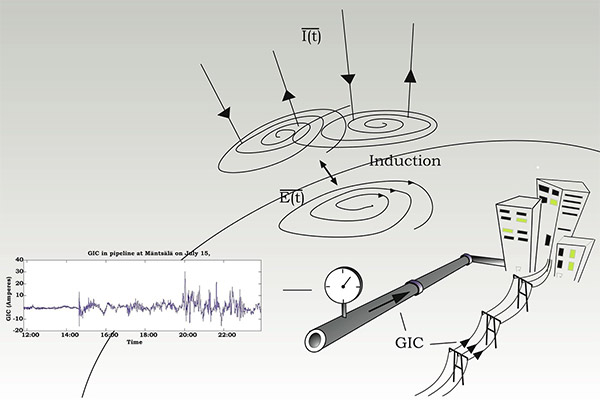
Computers and electronics: Low-Frequency EMPs do not create currents in the small wires found inside modern computer systems — you need a high-frequency EMP for that. Depending on how tiny a computer’s circuits are, and how connected they are to longer wires like antennas or power sources, the currents and secondary magnetic fields caused by a high-frequency EMP could be fairly weak and just cause a few software errors, or they could be strong enough damage the computer hardware itself.
Learn more about electromagnetic induction and EMP:
- Electromagnetic induction, Wikipedia
- Geomagnetically induced currents, Wikipedia
- Nuclear electromagnetic pulse, Wikipedia
Solar EMPs are a real threat
The sun periodically spits out jets of high-energy particles that bombard the earth’s upper atmosphere with radiation. These “space weather” events can have severe impacts on earth-based technology. Space weather-induced EMPs are a much more significant threat than nuclear EMPs, for the following reasons:
- A massive solar storm is more likely to happen in any given year than a major nuclear war or a nuke-based terrorist attack
- A major space weather event is inevitable, yet the timing is unpredictable and we may have only 20 minutes of advance notice (or none at all)
- The modern electrical grid wasn’t (and still isn’t) designed to handle the full range of EMP the sun can throw at the earth
- We have very little hard data about what will actually happen to the grid in some of the worst-case scenarios, so we have to rely mostly on sophisticated models and theories
- A big enough space weather event would have global effects, possibly bringing down most or all power grids in all countries, which would mean there is nowhere to evacuate to and no help on the way
One academic scientist we interviewed told us that the space weather community is deeply worried about the possibility of a major storm, and has been for a while — it’s very much their version of the climate change threat.
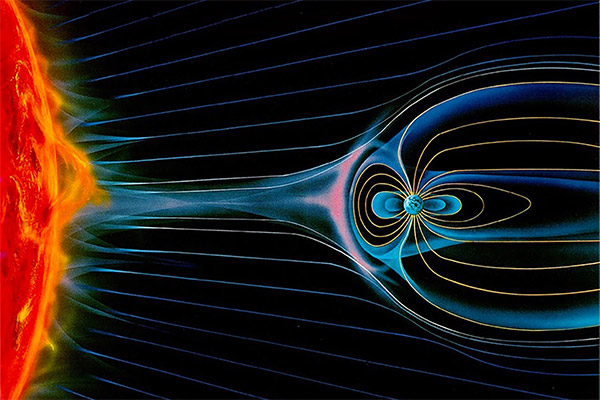
There are two famous space weather events that are used as reference points by experts and throughout this guide:
- The Carrington Event: The major geomagnetic superstorm of 1859 was so powerful it caused northern auroras to light up the night sky over most of North America, to the point that people in the Rockies thought morning had come early. The telegraph wires strung across Europe and North America carried a geomagnetically induced current so powerful that many telegraph operators couldn’t touch their equipment without getting shocked.
- The March 1989 geomagnetic storm: Far weaker than the Carrington event, this X-15 class storm triggered auroras as far south as Florida and Texas. But it still knocked out the power grid in Quebec for 9 hours and caused some physical damage to large power transformers.
Some experts place the odds of a major, Carrington-class solar event at between 1% and 3% per year, while others put the odds at between 3% and 10% per decade.
We have systems and satellites in place that are supposed to warn us if a big solar storm is approaching. But it’s worth noting that a Carrington-class superstorm narrowly missed the earth in 2012 and slammed directly into one of our space weather satellites. It took scientists almost a year to learn that this had even happened. So we can’t count on getting any notice, at all.
Even if we do get advance warning of the storm’s magnitude and polarity, the geomagnetic effects are impossible to predict with any accuracy. We won’t know how bad it will get until the disaster is already in-progress.
We go into deeper detail about how the power grid is structured and why EMPs are so harmful to it in the grid basics section below. But the summary version is that we don’t really have enough information — though what we do know points to a range of catastrophic scenarios that depend on the size of the storm.
Learn more about space weather’s EMP effect:
- A major solar eruptive event in July 2012: Defining extreme space weather scenarios, D.N. Baker et al., July 2013
- Severe Space Weather Events: Understanding Societal and Economic Impacts: A Workshop Report (2008), National Research Council, https://doi.org/10.17226/12507
- Congressional Testimony of Justin Kasper, Ph.D., Associate Professor of Space, Science, and Engineering, University of Michigan. February 2019
Nuclear EMP attacks are possible, but unlikely
It’s surprisingly difficult to get a handle on how serious the threat of a nuclear EMP attack is. It’s hard to say whether or not anyone would or could attack us, and it’s not clear what the impact would be if they did. After sorting through all the controversy around this topic, here’s what we’ve learned:
The probability of a nuclear EMP attack is very low, given that all but the smallest such attacks require the resources of a major military power, and any nation found to be participating in such an attack would suffer immediate nuclear annihilation from a counterattack. We’ll know the moment an ICBM is launched in our direction. So the same logic of mutually assured destruction (MAD) that has formed the basis of decades of nuclear deterrence also keeps the major nuclear EMP threat in check.
As for terrorists, many experts consider it essentially impossible for non-state actors to get their hands on a nuclear-tipped missile of sufficient size and range to blast a significant portion of the US with a EMP.
The size of the nuke and the elevation of the blast matter a lot for determining EMP effects. The higher up the bomb gets above the earth, the more ground it can cover with its EMP pulses. And the bigger the bomb is, the stronger the E3 pulse. (Larger bombs don’t produce much larger E1 pulses, though.)
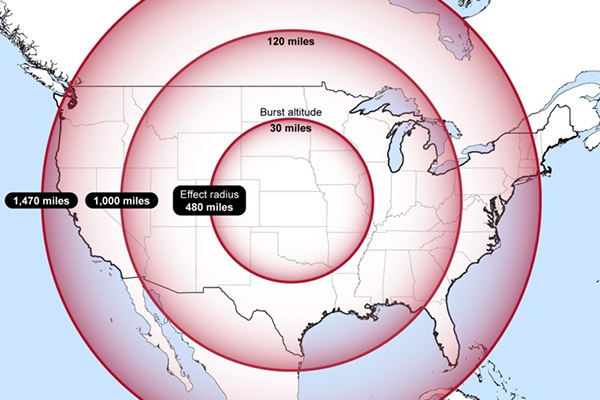
This size + elevation = devastation relationship is one of the main factors that makes it unlikely we’ll be hit with an EMP blast. Very few militaries have the types of intercontinental ballistic missiles (ICBMs) that you’d need to get a nuke to the required height, and even fewer can put large nukes on such missiles.
More militaries, as well as rogue states and terrorist groups, can get hold of smaller missiles and put little nukes on them, but to get them up over the US you’d need to either launch from US soil or from right off the coast. Getting a nuke and missile launcher combo into the US totally undetected is so difficult that we don’t consider this a threat worth worrying about. And again, if they succeeded and we figured out who was behind it, we’d nuke everyone involved as payback.
The impact of a nuclear EMP attack is impossible to estimate reliably, but available evidence points to a disturbingly high likelihood of widespread catastrophe from both E1 and E3 pulses.
We dive into what is known about the impact of a nuclear E1 pulse in more detail in section “How a nuclear EMP impacts electronics,” but the summary is that modern computers could be in big trouble. And the more modern the computer, the more trouble it’s probably in.
As for the E3 pulse’s impacts, many of these are in roughly the same category as a solar EMP, so we’ll consider those impacts in the section below on solar flares. The main differences between an E3 pulse and a powerful solar storm is that the E3 pulse is short in duration (only a few seconds) and localized (see the map above), whereas a bad solar storm could engulf the whole planet in an EMP for days on end.
Learn more about the effects of a nuclear EMP attack:
- The Early-Time (E1) High-Altitude Electromagnetic Pulse (HEMP) and Its Impact on the U.S. Power Grid. January 2010. Written by Metatech Corporation for Oak Ridge National Laboratory.
- Assessing the Threat from an Electromagnetic Pulse (EMP) Attack, Executive Report, Commission to Assess the Threat to the United States from Electromagnetic Pulse (EMP) Attack, July 2017
- The EMP threat: fact, fiction, and response (Part 2), by Yousaf M. Butt in The Space Review, 2010
EMP bombs, superweapons, and briefcase nukes
Weapons designed specifically to release an EMP without a nuclear explosion aren’t really a thing — at least not that’s worth worrying about.
The concept makes for great alien invasion sci-fi movies: a ship in orbit points a high-tech cannon at the earth, then shoots out a pulse that fries every electrical component before they land and become our new overlords … or best friends? Let’s not rush to judgement 😉
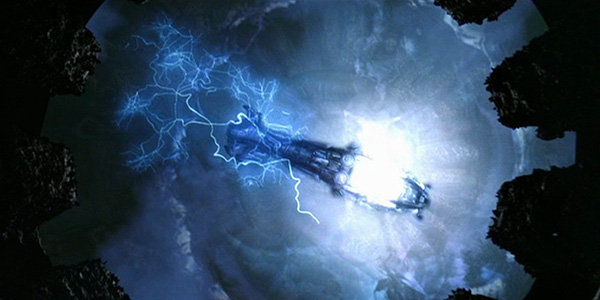
But in real life, the shadowy world of dedicated EMP superweapons, which use non-nuclear technology to give off a microwave burst that knocks out small electronics, is highly classified and speculative. We don’t know much about such weapons — in what forms they even exist, who has them, how well they work, which groups could access them, or anything else that matters when trying to evaluate this scenario.
As for smaller nukes that could be smuggled into the US and detonated in a city, these are very difficult to obtain and to hide from authorities. It’s likelier that terrorists could get their hands on these than on an EMP weapon, but the odds are still slim.
What follows is the most that’s worth saying about these two EMP terror scenarios:
- Any ground-based EMP pulse, whether it comes from a microwave weapon or a tactical nuke, can affect only a few square miles at most. Such things are not credible threats to national infrastructure, and their impact on regional infrastructure, while potentially severe and long-lasting, would not be permanent.
- In any scenario where a tactical nuke has gone off in a city, that city has bigger problems than the EMP pulse (e.g. radiation, blast effects, fallout, etc.).
- Only a major nation-state is likely to have access to an EMP bomb, and in any scenario where a major military is using EMP superweapons against western cities, the entire country (and likely the whole world) has much bigger problems.
In sum, we don’t see a localized, ground-based EMP weapon of any kind as a special threat.
Learn more about EMP weapons and small, tactical nukes:
- Strategic Primer: Electromagnetic Threats, 2018 Winter, Volume 4, American Foreign Policy Council
- Expert: EMP Weapons Are a “Loony Idea”, by Dave Majumdar, The National Interest, December 2017
How a nuclear EMP impacts electronics
There is very little good data on the impacts of a genuine, nuke-created E1 pulse on the electronics that underpin most aspects of modern society, so experts disagree on our level of vulnerability. As with most things EMP-related, we really don’t have enough unclassified data to work with, but what little we do know looks grim.
America’s Cold War-era tests of high-altitude nuclear explosions didn’t exactly produce a wave of stalled cars, power outages, or fried electronics. But our electronics and critical infrastructures are far different today than they were in the 50’s and 60’s. Our infrastructure has gotten much bigger and more automated, and our electronics have gotten a few orders of magnitude smaller and more ubiquitous — both of those things could make a huge difference in how a nuclear EMP would affect the modern world.
Our infrastructure is bigger and more automated, and our electronics are a few orders of magnitude smaller and more ubiquitous — both of those things could make a huge difference in how a nuclear EMP would affect us.
The most recent and detailed examination of the threat of E1 pulses to modern electronics that we’ve found is a January 2016 Department of Energy report from Idaho National Labs. The INL report’s main message is that we simply do not know how well modern microelectronics will hold up under E1 pulses of different sizes because the relevant tests with real, nuclear-based pulses are decades old and were carried out on hardened military hardware. Any more current and representative tests are either classified or “need to know.”
The unclassified studies referenced in most reports used bursts of microwave energy to simulate an E1 pulse. But everyone admits these simulations are imperfect, and it’s unclear how much they reflect the impact of a real-world E1 on small electronics. The 2008 EMP Commission report found it “highly significant” that, in their testing, every single computer system they hit with a simulated E1 pulse failed to one degree or another.
Despite the lack of hard data, the INL report does consider it a serious possibility that a real E1 pulse from a nuke could cook many types of microelectronics our society relies on. At one point it states outright, “Newer chip sets that require less power are theoretically more sensitive to EMP along with wireless components/antennas… Unshielded embedded systems will likely be damaged by an EMP.”
(The term “embedded systems” is another name for the industrial computers that run parts of our critical infrastructure.)
An earlier report declassified in 2010 and prepared by Metatech, a group of senior scientists and engineers who study electromagnetic interference (EMI) for the government and the private sector, tells a similar story:
There is reason to worry about our vulnerability to E1 HEMP [High-altitude EMP]. As the devices in our modern systems become smaller, their operating voltages get lower, and their operating frequencies get higher, E1 HEMP looks to be more of a threat. The coupled signal can easily be hundreds or thousands of volts, while electronics operate at a few volts. The E1 pulse can last for many time cycles, and also have significant energy at system operating frequencies (100’s of megahertz or higher). The high density of transistors and other devices on an integrated circuit means each is very small – so that even a small amount of energy can be very significant; the smaller the mass that absorbs a given amount of energy, the higher the mass’s temperature increase from the absorbed energy.
While this sounds really bad, Metatech is at pains to be clear that a worst-case scenario is impossible to model. There are just too many variables. So the report gives the following vague caveat:
It certainty is unlikely that all electronics in the country, or even in any small region, would suddenly stop in the event of a high altitude explosion. Unhardened modern electronics, with long attached cables, are likely to be hard hit, and some fraction hurt. Cars and vehicles might have some failures. Newer ones do depend on a multitude of computers to work properly, but their cabling is limited in length. It is unlikely that very small systems, such as an electronic wristwatch, would experience much trouble.
It also matters if the electronics are powered on, or not, as electronics that are either connected to wall power or running on battery power will have more ways to fall victim to an E1 pulse than electronics that are powered off.
There are really only two things you can do to prepare your electronics for an E1 pulse:
- Put critical electronics in a Faraday cage
- Make sure your electronics are powered off
Learn more about the effects of EMP on smaller electronics:
- Electromagnetic Defense Task Force 2018 Report, Maj David Stuckenberg, Amb. R. James Woolsey, Col Douglas DeMaio, Curtis E. LeMay Center for Doctrine Development and Education Maxwell Air Force Base, Alabama
- The 50th Anniversary of Starfish Prime: The Nuke that Shook the World, by Phil Plait in Discover Magazine, July 2012
- Report of the Commission to Assess the Threat to the United States from Electromagnetic Pulse (EMP) Attack, April 2008
EMP’s impact on cars
One of the most commonly propagated and criticized bits of EMP lore is the idea that modern automobiles will stop working if hit by an E1 pulse from a nuke. Willian Forstchen’s apocalyptic novel, “One Second After,” famously had all modern automobiles stop working in the aftermath of an EMP blast from a high-altitude nuke. However, this aspect of the book has been widely ridiculed, since there’s no hard evidence that cars will fail like this from an EMP.
Tom Cruise in 2005’s War of the Worlds:
The main highlights about cars and EMPs:
- The 2008 EMP commission investigated this topic by blasting 37 running cars and 18 trucks with a high-frequency microwave burst intended to simulate an E1 pulse. Only 3 cars died and needed a restart, and only one truck had to be towed.
- The 2008 EMP commission’s microwave pulse was not the same as an E1 generated by a nuke. It was just an approximation, and experts disagree on how much it really tells us. The answer is probably “not much,” especially for newer cars, since the newest car tested was a 2002 model.
- The 2007 Future Weapons episode where a car died after being put through an EMP simulator at White Sands Missile Range was staged, and should not be relied on.
- White Sands Missile Range does EMP testing on cars for the automotive industry, but the results are secret and mostly aimed at making sure different electronic systems in the car don’t interfere with one another (similar to why you turn off electronics during aircraft takeoff and landing).
- The military has done extensive testing on this issue, but mostly on military hardware that has been EMP-hardened. That testing is classified. If any realistic EMP testing has been done on consumer-grade electronics like those found in cars, its results are also classified.
The bottom line: An E1 pulse from a nuke could very well stop many cars dead in their tracks, but how likely that is depends how modern the car is and where it’s located relative to the blast. Newer cars have more microprocessors and other electronics in them than older cars, so they’re more likely to fail at further distances from the nuke.
As far as we know, there are no hard-and-fast rules — like what decade the car was made in or how far it is from a nuclear blast — that will tell you with any certainty how likely it is to fail from an EMP.
There are some second-hand reports of secret, Cold War-era Soviet tests that suggest even relatively primitive cars could fail if they’re hit by a strong enough pulse. But there just isn’t enough unclassified data that we can rely on.
Given the lack of data, we think it’s prudent to assume the worst and assume that any car from any decade could be vulnerable to one degree or another. So we consider the sudden loss of most or all powered transportation a scenario worth preparing for as much as you realistically can. Of course, most people cannot park their car inside a Faraday cage, so this means planning for bugging out without your vehicle and knowing what to do if you’re in your car when a pulse hits it and kills it.
Some steps you can take to prepare:
- Get serious about having your alternative bug-out plan squared away. Do not center all your plans around having a functioning automobile — otherwise you’re breaking the sane prepper rules about tunnel vision and false assumptions.
- Learn how to stop your car with the emergency brake. This will mean putting the car in neutral and using the handle brake to stop. Only try this in a safe environment, like a private road or parking lot!
- While driving, be aware of any large trucks or 18-wheelers immediately behind you. They will not stop quickly in an emergency, so you’ll need to just get out of their way.
- Know that you can still steer even if your car loses power. It will just be difficult.
- Keep any primitive, gas- or diesel-based modes of transportation, like a lawn tractor or ATV, in good working order. These types of vehicles will almost certainly still work.
- If you have the resources and the space, consider buying a very old car or tractor as a backup.
- If you have a primitive vehicle with an electric starter, consider keeping a backup solenoid and learning how to install it. We don’t consider it likely that starter solenoids will be harmed by an E1 pulse, but the Soviet tests suggest they might.
- Consider putting a smaller vehicle, like an ATV or UTV, in a Faraday cage.
- Consider putting some smaller replacement electronics for an ATV or other primitive vehicle in a Faraday cage, as backup.
- Have plenty of fuel on-hand, because even if your car survives the EMP it will still stop when it runs out of fuel, and the gas stations will be closed.
Learn more about EMP and cars:
- More EMP Nonsense, Jeffrey Lewis, 2013
- EMP Effect on Vehicles, by Jerry Emanuelson
Experts disagree on how EMP would affect the grid
People on all sides of the EMP controversy agree that the power grid is the primary source of our society’s vulnerability to an EMP blast, regardless of whether that blast is nuclear or solar in origin. But the exact level of danger we’re actually in is a major point of contention among experts with different industry, academic, and political affiliations.
The fault lines of expert opinion around EMP and the grid break down as follows:
- Scientists and engineers who work for the power industry, or for power-industry-backed think tanks, uniformly downplay the threat of space weather and nuclear E3-pulses to the power grid. However, these same experts do acknowledge the serious threat of an E1 pulse from a nuke.
- Experts and government officials from the military, or with ties to military contractors, or who are hawks about the threats from smaller, nuclear-armed states, tend to overhype the feasibility, likelihood, and impact of nuclear EMP attacks. These experts also paint a dire picture of the threat from space weather.
- Most academics and security studies experts who oppose the foreign policy hawks and who aren’t in favor of increased military spending tend to dismiss the nuclear EMP threat as largely fictional. Some of these experts also dismiss the solar threat, though others do take it seriously.
- Academics and private sector experts who lack obvious power or defense industry affiliations tend to be very worried about space weather, and also worried about the impacts of nuclear EMP (though they don’t share opinions on the likelihood of the latter).
- Civilian government agencies tasked with preventing or responding to disasters, namely FEMA and DHS, take the space weather threat very seriously. It’s less clear where they are on the nuke threat.
- The insurance industry has a range of estimates for the impact of space weather on the grid. Some are moderately bad, and some are catastrophic.
To get a sense of just how much expert opinion varies on the impact of a massive solar storm, consider the Metatech report that was declassified in 2010 and that has formed the basis for numerous government agencies’ disaster planning scenarios (including FEMA). Metatech modeled the impact of a Carrington-class solar event on North America, and their simulations resulted in over 120 million people without power and the majority of the grid offline for 4 to 10 years.
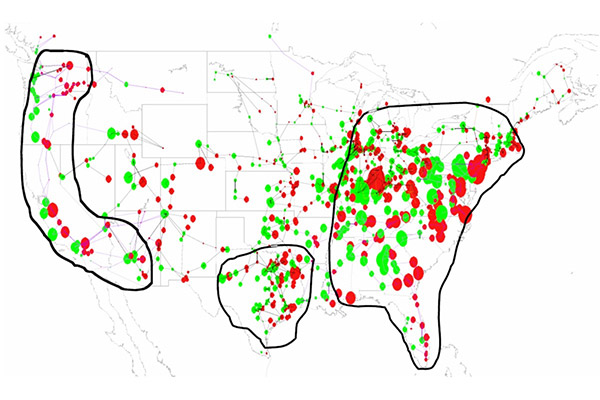
Contrast this to the famous 2013 report from insurance company Lloyds of London, “Solar Storm Risk to the North American Electric Grid,” which modeled a Carrington-class storm and projected between 10 million and 40 million people without power for months or years in the Northeastern US, with the rest of the US grid still intact and functioning normally.
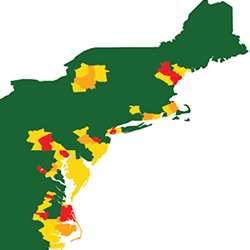
As for nuclear EMP, arms control expert Jeffrey Lewis has described the results of a nuclear EMP blast over North America as “a nuisance, but preferable to having the bomb detonate in a major city.” Lewis is by no means alone among academics and journalists in expressing extreme skepticism about the nuclear EMP threat (see the “Learn more…” section, below).
Consider also the February 2019 Senate testimony from Dr. Randy Horton, Senior Program Manager at the industry-funded Electric Power Research Institute (the same group that’s behind the recent “clean coal” campaign). Horton insists that there is little risk to the modern grid from an E3 pulse — damage is “unlikely” or “minimal” — and that the Metatech report which shows over 100 EHV transformers offline is far too pessimistic. He does concede that the E1 pulse could be damaging, though.
Contrast these optimistic assessments with those from the US government, like the 2017 EMP commission report or a 2017 Air Force report on EMP threats, both of which suggest that even a relatively small nuke on an intermediate-range missile could be a civilization-ender for the US.
Learn more about the range of expert opinion on EMP and the power grid:
- The Newt Bomb, Michael Crowley, 2009
- The Boogeyman bomb, by Sharon Weinberger in Foreign Policy, 2010
- North Korea Nuclear EMP Attack: An Existential Threat, by William Graham, June 2017
Grid basics
To understand how and why our critical power delivery infrastructure could be vulnerable to different types of EMP, you have to consider it within the context of three strongly coupled but nonetheless distinct electrical systems:
- The earth/sun “space weather” system.
- The physical grid (power generation, transmission, and distribution facilities), which we’ve inserted into the middle of the earth/sun system without fully knowing how the latter works or anticipating what it’s capable of.
- The computerized command, control, and communications (C3) infrastructure that we’ve recently layered on top of the physical grid in order to run the whole thing for us.
The earth/sun system
We typically think of the earth as an inert ball, on top of which we’ve constructed a modern electrical system. Nothing could be further from the truth. The earth and sun together make up a planetary-scale electromagnetic system that flexes and flows in ways we only dimly understand.
The earth is, in effect, a giant semiconductor, much like the semiconductors that make up computer microchips. The planet contains regions that conduct electricity (“doped” in semiconductor language) and regions that are electrical insulators. These wide geographic variations in conductor/insulator properties have barely been mapped, yet they’re critical to modeling how the earth behaves electrically when its magnetic field is perturbed.
Inside this planet-sized semiconductor is a dynamo in the form of the molten, churning metal in the earth’s core. That dynamo wraps this planet-sized semiconductor in a powerful magnetic field. The earth’s magnetic field is more or less stable on the kinds of time scales that we care about, but it can be rapidly twisted and churned by a sudden event like a powerful solar event or the ionizing blast of a nuclear bomb exploding in the upper atmosphere.
When this magnetic field is set in motion by a blast from the sun or a bomb, it forms a low-frequency, ground-penetrating electromagnetic pulse that causes induction effects within long, unshielded conductors like buried metal pipes or elevated power lines.
The power grid
Electricity travels from the plants where it’s generated (nuclear, coal, wood, hydroelectric, wind, and solar) through a network of miles-long power transmission lines that criss-cross the country. It makes stops along the way at thousands of substations that house sensitive equipment, like the extra high-voltage (EHV) transformers that get the current ready to be distributed to homes and businesses.
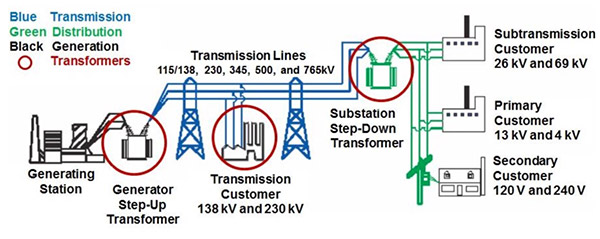
These EHV step-up and step-down transformers are expensive to manufacture and transport: they cost millions of dollars, weigh between 100 and 400 tons, and are made from difficult-to-source materials.
The total worldwide production capacity for EHV transformers is about one hundred units per year. So replacing such a transformer is a process that takes from 5 to 16 months, and requires functioning fuel and transportation infrastructure (car and rail) to get the device on-site and installed.
We do not currently have replacement units available for more than a handful of EHV transformers, so the loss of just ten or more would take a year or more to fully recover from in the affected regions.
It’s worth noting that electrical power is generated and transmitted in the form of alternating current (AC), in which current reverses direction rapidly as it’s transmitted. Contrast this with direct current (DC), where the voltage goes in one direction. This distinction is important, because no part of the main power infrastructure described above is made to handle a DC load — exactly what an E3 pulse induces.
Embedded systems and SCADA
When much of the power grid was originally built, it was controlled by electromechanical devices that humans operated to do the work of monitoring and routing electricity around the network in response to demand. But in recent years, the electrical grid has been upgraded by the same computer-automated enhancements as everything from cars to homes.

The moment-to-moment operation of the grid is now handled by a network of computers and sensors, many of them connected to the public internet, that are referred to variously in the literature as “embedded systems” or Supervisory Control and Data Acquisition (SCADA) systems. These SCADA systems are present in every nook and cranny of the grid. They run the power plants that generate electricity (and the backup systems in those power plants), and they’re found in the remote power substations that dot the landscape of the country.
If these SCADA systems stop working, then the grid stops working.
Modeling the grid and predicting direct impacts
Most commentators who downplay the EMP threat claim the electric grid is complex and difficult to model properly, therefore we really have no clue what the impact of a severe EMP would be. But Metatech’s John Kappenman tells The Prepared that this is false.
Kappenman told us that the grid is actually relatively easy to model. The hard part is modeling the earth and figuring out the location and magnitude of GICs. The earth’s electrical conductivity varies greatly by geography, and these variations can affect GIC numbers by up to a factor of 8X. So differences in ground models are behind much of the variation in expected EMP impacts described above.
Metatech alleges that poor ground modeling is behind the Lloyd’s report’s more optimistic (and in their opinion, incorrect) estimates of likely power grid outages. Or, in a more recent case, Metatech filed a regulatory comment outlining how the US power industry was found to be submitting models for domestic EMP impacts that are based on a handful of GIC measurements from Scandinavia.
It’s also the case that US power companies keep secret the GIC measurements they take during periodic solar events. If they were forced to make these measurements public, it would greatly improve everyone’s ability to model EMP impacts and develop mitigation strategies for different parts of the country.
How an EMP could bring down the grid
We outlined above just how divided experts are on EMP’s real-world impact on the power grid, but there are a few places where the sources we’ve reviewed are in pretty broad agreement:
- Nobody really knows for sure what will happen, or how, in the event of a nuclear or solar EMP. We lack too much critical data to make firm predictions, which unfortunately makes it quite hard to justify hundreds of millions in spending on mitigation measures
- The main grid vulnerability for a nuclear EMP is its reliance on SCADA systems
- The main grid vulnerability for a solar superstorm is in the large EHV transformers, which can overheat and burn out when exposed to EMP-induced currents. Modern SCADA systems actually make this vulnerability worse by running those transformers closer to peak load for efficiency reasons.
Recent Senate testimony from Nathan Anderson, Acting Director of the US Government Accountability Office, summarizes the current, sad outcome of decades of study and work on how a solar storm (GMD for geomagnetic disturbance) would impact the power grid:
In December 2018, GAO reported that federal policymakers face three broad questions that need to be addressed regarding GMD effects on the electricity grid: (1) What is the likelihood of a large scale GMD? (2) What is the risk such storms pose to the electricity grid? and (3) What are potentially effective solutions to mitigate the effects of a large scale GMD? Efforts are under way to address aspects of each question that will help inform whether additional actions are needed to prevent or mitigate the effects of GMDs on the U.S. electric grid.
You read the above correct: despite knowing about these risks since the Cold War and having the capacity to study them, we still don’t know enough about how likely a major solar storm is, or exactly what it will do to the grid, or how best to mitigate the risks, to put a real plan in place for preventing a catastrophe. Even if the power industry had a few hundred million in free money to harden the grid, they don’t have enough information to even guide them in spending it.
Another theme that came up over and over again in our review of the literature — and even power industry sources acknowledge this — is that recent decades’ takeover of the grid by SCADA systems has greatly increased its vulnerability to both nuclear and solar EMPs.
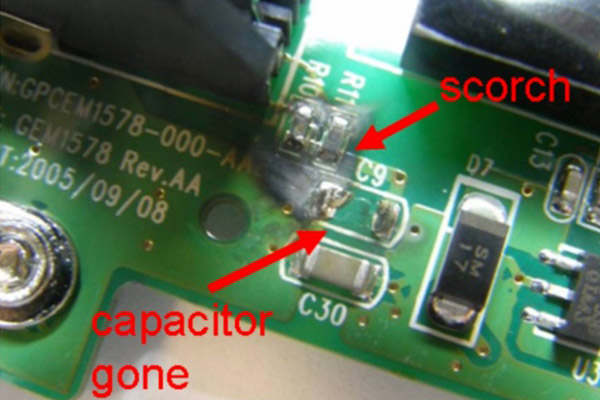
The high-frequency E1 pulse from a nuclear blast can fry the delicate electronic circuitry in the SCADA systems that keep the different parts of the grid running. With the notable exception of nuclear power plants, these systems are not shielded against EMP, either in plants or in substations. And even at nuclear plants, the SCADA systems controlling the backup generators that run the emergency cooling systems are not shielded.
Multiple sources we reviewed and one expert we talked to expressed deep concern about the impact of an E1 pulse on these critical control systems. A Metatech report by Kappenman that was declassified in 2010 looks in detail at the possible impacts of an E1 pulse on grid SCADA systems:
Given the vulnerability levels for such [electronic] equipment, and the levels of coupled signal that E1 HEMP can produce, it can be seen that the “brains” and communication systems of any modern power facility could be vulnerable to E1 HEMP. This applies to power substations, control centers, and power generation facilities. However, there can be a large range of variation, which depends significantly on the particular layout of each facility.
Kappenman described the problem this way in a recent interview:
Let me give you a simple illustration of what the challenge is. If you walk into a power plant control center, and I’ve seen this on combustion turbines at a relatively small facility and so forth, they all have a very sophisticated electronic distributed control system for each of these generators. Every one of them will have a sign on them that shows a cell phone with the big circle and line through it, saying “don’t use your cellphone next to this piece of equipment.”
Well, the cellphone will generate a field of about 1 to 3 volts per meter. The EMP device can do about 50,000 volts per meter (it’s unclassified).
So that’s your basic thing you need to understand about what you’re facing if you own this piece of apparatus. It’s probably not going to have a good day if an EMP event occurs.
Shielding these systems against E1 by means of a Faraday cage would be expensive and difficult, since E1 pulses bounce off of metal and can ricochet their way through any gaps in the shielding. So we’re a long way and many hundreds of millions of dollars away from even beginning to address this widespread vulnerability.
But modern embedded systems don’t just make the grid more vulnerable to E1 pulses from nukes, they also make it more vulnerable to the slower E3 pulse and its solar equivalent. Because the SCADA-controlled grid is more efficient and runs closer to capacity, there’s less leeway in critical parts of it to handle a surge in DC caused by a solar event or nuclear-generated E3 pulse. As the EMP Commission report puts it when discussing this issue, “The closer a transformer is operating to its performance limit, the smaller the GIC needed to cause failure.”
Kappenman told us that, because of the modern grid’s greater size and efficiency, even a 50-year solar storm in the same class as the 1989 event that temporarily brought down large parts of the power grid in Quebec might well be enough to bring down much of today’s North American grid. (Note that in 1989 the grid was about half the size of our current grid.)
What experts like Kappenman worry about specifically is that the big EHV transformers could overheat when hit with a geomagnetically induced DC current of sufficient size and duration, and fail catastrophically. The number and location of catastrophic EHV transformer failures is actually the main place where different impact assessments disagree. The Lloyds report doesn’t give a worst-case number, but their next-to-worse-case is 10-20 EHV transformers that need to be replaced due to a solar storm; Metatech’s solar storm scenario has over 300 EHV transformers offline.
Learn more about EMP and the power grid:
- Geomagnetic Storms and Their Impacts on the U.S. Power Grid. January 2010. Written by Metatech Corporation for Oak Ridge National Laboratory.
- Solar Storm Risk to the North American Electric Grid, Lloyds of London, 2013
- Large Power Transformers and the US Electric Grid, Infrastructure Security and Energy Restoration Office of Electricity Delivery and Energy Reliability U.S. Department of Energy. June 2012
Regional grid-down and evacuation
In a regional grid-down scenario, either because of a relatively low-altitude nuke or a solar storm that comes in at just the right angle and intensity to have limited impact, it could take months or years to repair critical infrastructure.
If the SCADA systems that control the grid are merely wiped of programming by a nuke’s E1 pulse, it’s almost certain that their remote update capabilities won’t work, so their control software will have to be reinstalled on-site. If the systems are damaged and must be replaced, repairs will stretch out far longer, since new parts must be ordered and installed. In either case, this would be a massive undertaking, and the affected area should expect to be without power for months or even years.
Residents of these areas would obviously be evacuated to regions with a functioning grid, and it’s likely they wouldn’t be allowed to return for a very long time. Eventually, though, they’d be able to go back home. And because the financial system will also be functioning, and they can expect insurance to pay out (though most likely with some type of government help).
National grid down: Black starts and nuclear meltdowns
There are a number of possible national grid-down scenarios, the most likely of which being that large parts of the grid are brought offline immediately by a nuclear or solar EMP, and the rest of the grid fails due to cascade effects (see below).
We’d face many important challenges in a national grid-down scenario, but two of the worst are the “black start” problem and the nuclear spent fuel problem.
Such a system-wide “black start” has never been needed or attempted before, so it’s not clear how we’d even go about doing this.
A “black start” is when a power plant comes online either for the very first time or after a full shutdown. In every case, no matter the power plant type, a black start requires power from some external source: typically the power grid, but some plants have on-site generators specifically for this purpose.
Many plants also need some sort of matching load from the grid in order to work properly, i.e. they actually need devices out there drawing power from them as they spin up. Because it’s a delicate dance of supplying power from an outside source, bringing up the generator, and introducing matching loads, black starts are considered as much art as science.
Given that a black start is a delicate operation that involves power going into and out of the plant from a functioning power grid, you can imagine what a nightmare it would be if the entire power grid — from plants out to substations — must be brought back online after having gone completely dark.
Such a system-wide “black start” has never been needed or attempted before, so it’s not clear how we’d even go about doing this.
Much worse than the black start problem is the problem of meltdowns at the nation’s 60 nuclear power plants. The plants themselves are designed to be safely shut down (to “SCRAM” in nuclear power jargon) in the event of an emergency, but the problem is not the reactors themselves: it’s the spent fuel rods that are stored on-site in unshielded, metal-walled cooling tanks. If the on-site backup generators that keep water flowing over those fuel rods shut down — and they only have about seven days worth of diesel on-site — then those rods will begin to heat up.
Eventually, they’ll go into uncontrolled meltdown and begin spewing long-lasting radiation into the environment, Chernobyl-style.
The spent fuel pools were a major source of danger in the Fukushima crisis, and much effort was expended by emergency crews to keep them filled with flowing water. It was Fukushima, and the sight of crews using firetrucks and firehoses to run water over spent fuel, that woke up many policymakers and preppers to the reality that nuclear plants with spent fuel on-site (i.e. most nuclear plants around the world) aren’t necessarily safe by default when they lose constant access to critical infrastructure and personnel.
Global grid-down: every country for itself
A national grid-down due to EMP or nuclear attack would be a doomsday scenario for the US. But, believe it or not, things could be worse. A large enough solar storm would torque the earth’s magnetic field hard enough to bathe the entire planet in a powerful EMP. Possibly days of it, depending on how long the storm lasts.
In such a global superstorm scenario, there could be no place to evacuate to and no other country to help us out. A 2013 workshop report from a global conference on space weather states that while a number of countries have successfully hardened their grid against moderate space weather events, “the vulnerability of the power grid with respect to Carrington-type events is less conclusive and needs to be assessed.” So it’s likely that most or all nations with a population that relies on the power grid would be in the same mess.
The best places to be in this scenario would ironically be in the least developed parts of the world, where populations are used to doing without power for long stretches of time and don’t require it for food, water, and other necessities.
Cascade effects of EMP on other critical infrastructure
Power plants aren’t the only part of our critical infrastructure that depends on SCADA systems to function. Manufacturing, water treatment, food and fuel distribution systems, financial services, internet and telecommunications, public and private transportation — all of these areas of modern life increasingly use computers to do their thing.
In the aftermath of an E1 bast of sufficient power and elevation, it is well within the realm of possibility that much of the above will simply stop working (either due to software errors or outright physical damage) and everything modern will just stop.
But even without a devastating E1 pulse, a powerful storm or E3 pulse could bring down enough of the grid to cause all of the aforementioned areas to go dark as cascade effects take hold.
The 2008 EMP Commission report points out how many of the systems we rely on for modern life depend on each other and, ultimately, on the power grid. The power grid, then, is a single point of failure for our civilization.
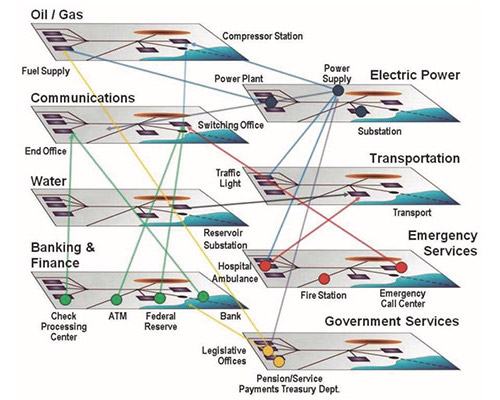
Most infrastructure facilities with backup generators only have about seven days of fuel on-hand, and their emergency plans presume a functioning fuel distribution infrastructure in the rest of the country. This is why in the recently released FEMA scenario doc, FEMA expects that all communications (with the possible exception of some top-secret satellite comms) will go dark by the eighth day after a Carrington-class EMP.
That’s the entire country’s telephone, internet, and satellite communication systems offline, largely due to cascade effects.
The FEMA simulation restricts itself to command, control, and communication (C3) infrastructure, but its wider implications are clear and dire: in any scenario where every modern means of communication has gone dark by 8 days after a large solar event, everything else has gone dark, too, including food, fuel, finance, transportation, the works.
Note that the FEMA scenario is based on the Metatech model, where about 120 million people lose power immediately. In the areas of the country with a still functioning grid, the agency notes that there’d be shortages of food, fuel, and other basic supplies, with the result that employees would stop showing up for work at critical infrastructure facilities. The resulting social chaos in those regions would bring down the grid there, too.
What to do in the immediate aftermath of an EMP that brings down the grid
When a major EMP event happens, don’t expect to know immediately what type of pulse it was, or how widespread its effects are, or even that it was actually an EMP and not, say, a major cyberattack. Even if you hear a loud boom and/or see a flash right before the power goes out, it could be a high-altitude nuke, or it could be a nearby EHV transformer blowing due to space weather.
Because there are so many possible EMP scenarios where you just wouldn’t know for sure what has happened, the first order of business after an apparent EMP attack is to assess the situation. Check your cell phone, radio, or any other communication channels you have access to and figure out if you’re dealing with an EMP. Note that with a sufficiently large EMP of any type (nuclear or solar), satellite systems will probably be disrupted, so while satellite comms can be great preps, they may not be much use in this scenario.
Tip: Do not assume that your smartphone or other electronic devices will definitely stop working in an EMP. If your smartphone goes dark along with the lights, that would certainly be a data point in favor of a nuclear EMP. But if your phone is still going, we could still have been hit by a high-altitude nuke and your phone just happened to have survived.
Once you’ve identified the source of the disruption as an EMP, the very next things you need to know are the origin and size of the event.
Why you need to know the origin: If the EMP is nuclear in origin, you can expect a nuclear counter-attack from the US at some point, sooner rather than later. This may escalate into a full-scale nuclear exchange, or it might be a limited attack on an enemy state. Either way, it will have widespread environmental and social impacts, and you’ll want to put the appropriate disaster plans in operation.
If the EMP is solar in origin, then multiple countries may well be affected (depending on severity and angle of impact), and we could be on our own for quite a while. You can also be more confident with a solar EMP that there won’t be a nuclear exchange in the near future, so you don’t have to worry about nuclear war preps.
Why you need to know the size: Once you’ve figured out the origin of the event, it’s also important determine the size of the affected area, because you’ll need know if you can evacuate or expect aid. This will probably be easier in a solar EMP than in the nuclear case, because a solar EMP will leave radio and many other electronics unaffected.
Finally, regardless of the origin and size of the EMP, you should have any wildfire preparations ready, especially if you live in an area prone to wildfires. Blown transformers, malfunctioning infrastructure, or a nuclear blast can trigger fires in the affected area, so keep your eyes open for signs of of fire and have the right preps on-hand.
